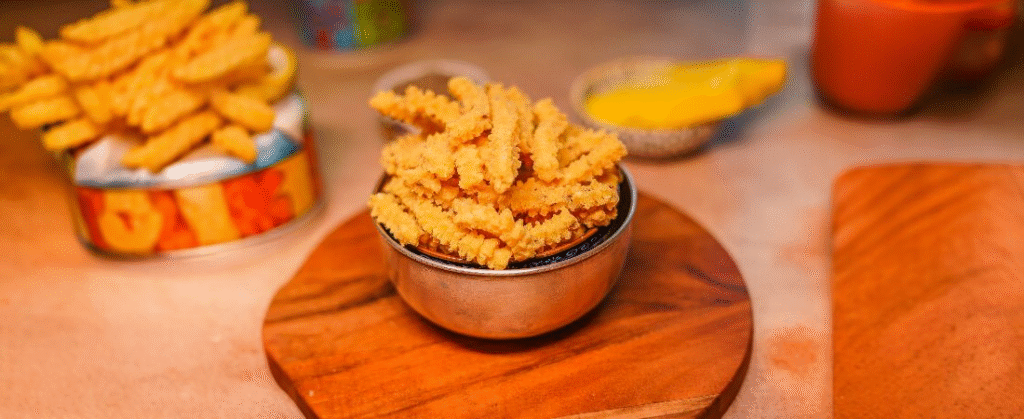In the sun-drenched fields of Tamil Nadu, where the earth breathes and the air hums with the promise of harvest, there once lived a wise and wrinkled farmer named Karuppu. His hands, gnarled like the roots of an ancient banyan tree, knew the secrets of the soil better than anyone. But for years, his most cherished crop, ragi—the hardy little finger millet—was a source of quiet sorrow. It was the food of the strong, the humble, and the hardworking, but it was rarely the star of the show. It was a backdrop, a foundation, but never the main event.
Meanwhile, in the bustling heart of Chennai, Karuppu's granddaughter, Aditi, was facing her own struggle. A young chef with a fiery passion for traditional foods, she was tired of seeing her heritage snacks relegated to the past. The crunchy, fried treats of her grandmother's kitchen—the murukkus, the thattais—were being overshadowed by modern, mass-produced junk food. She felt a deep ache, a separation from the very flavours that defined her childhood.
One sweltering afternoon, Aditi visited her grandfather. She watched him sift the ragi, the tiny grains slipping through his fingers like golden sand. "Thatha," she sighed, "I wish I could make people fall in love with our old foods again. They are so good for us, but they don't have a story that people want to hear."
Karuppu smiled, a slow, knowing crinkle spreading across his face. "Every seed has a story, my child. The ragi, it doesn't just grow; it survives. It stands tall and strong, even when the rain doesn't come. It holds within it the strength of the earth itself."
Aditi's eyes lit up. The strength of the earth... the deep, nutty flavor of ragi. She looked at the traditional murukku press, its brass gleaming in the sunlight. A crazy idea began to take shape. What if she combined the delicate, intricate form of the murukku with the robust, unyielding spirit of the ragi?
Back in her kitchen, she began to experiment. She roasted the ragi to a perfect, fragrant brown, then ground it into a fine flour. She mixed it with a touch of urad dal for that classic crunch and a whisper of cumin and asafoetida for a flavour that was both familiar and excitingly new. The dough was tougher than she expected, a testament to the grain's resilience, but Aditi kneaded it with patience and respect.
As she pressed the dough through the star-shaped mold, something magical happened. The deep purple-brown dough twisted into elegant, intricate swirls—each one a perfect, edible spiral. When she dropped them into the hot oil, they sizzled and puffed, turning from a rich, earthy brown to a glorious, golden hue. They emerged crisp, airy, and with a unique, earthy crunch that spoke of sun-baked fields and ancient wisdom.
Aditi knew she had found her story. She named her creation the "Golden Swirl," a testament to the golden fields of ragi and the intricate, beautiful shape of the murukku. She shared it with everyone, telling them not just what it was, but where it came from—the sun, the earth, the hands of a wise old farmer, and the passion of a young chef.
And so, the Manvaasanai Ragi Murukku was born. It wasn't just a snack; it was a revival. It was the humble ragi, once a quiet hero, now celebrated in a beautiful, crunchy swirl. It was a taste of the past, crafted for the future, proving that the truest stories are those baked in tradition and brought to life with a dash of innovation and a whole lot of heart.

